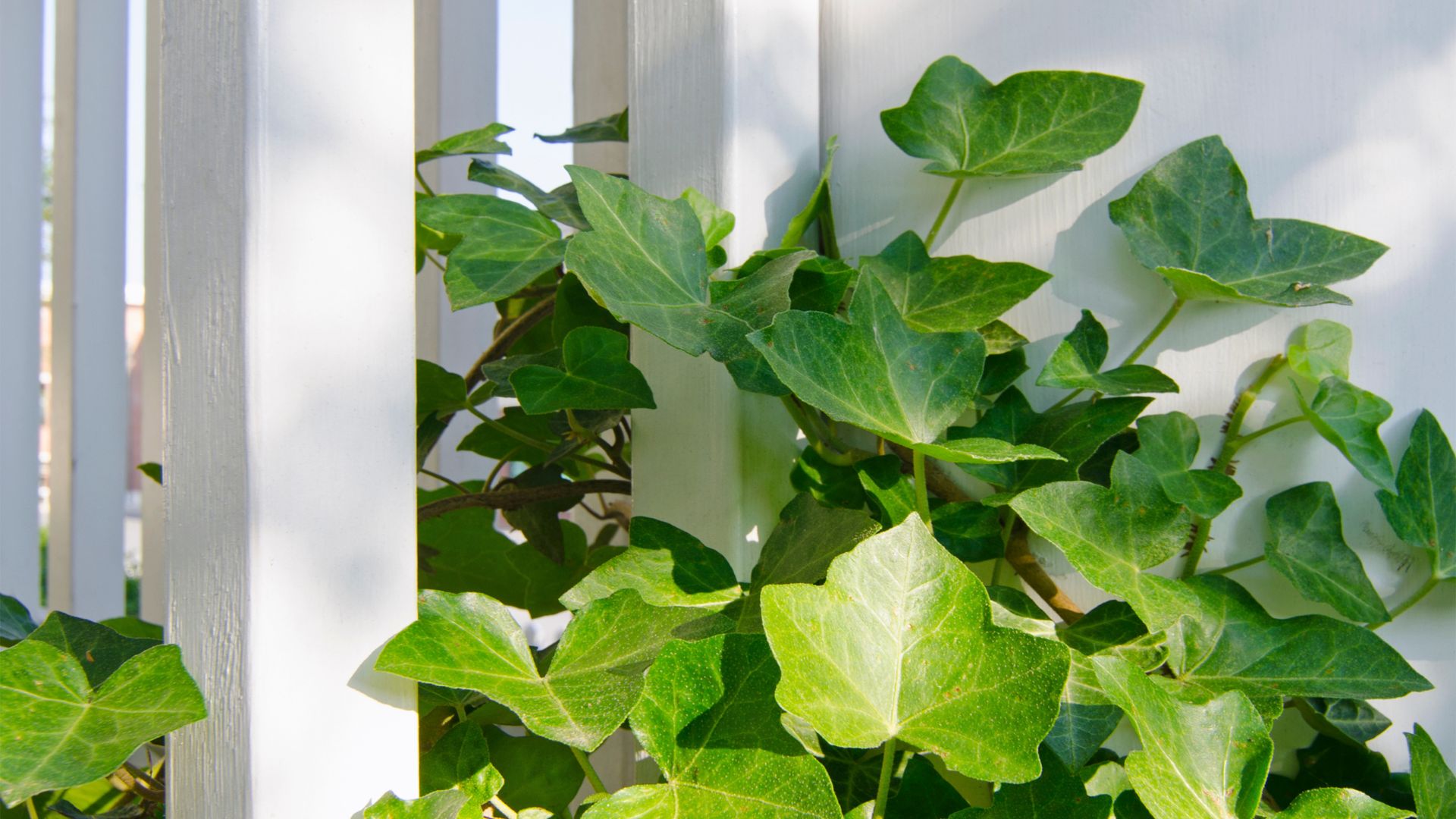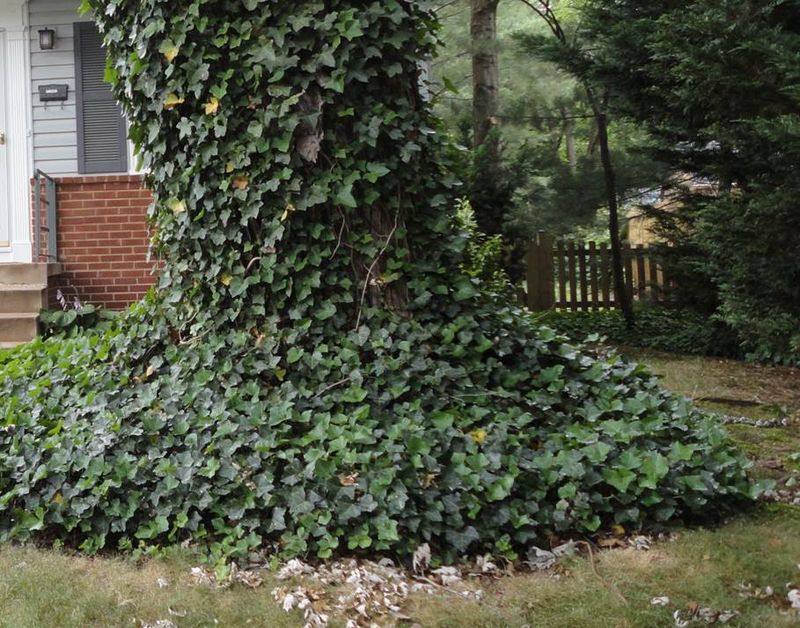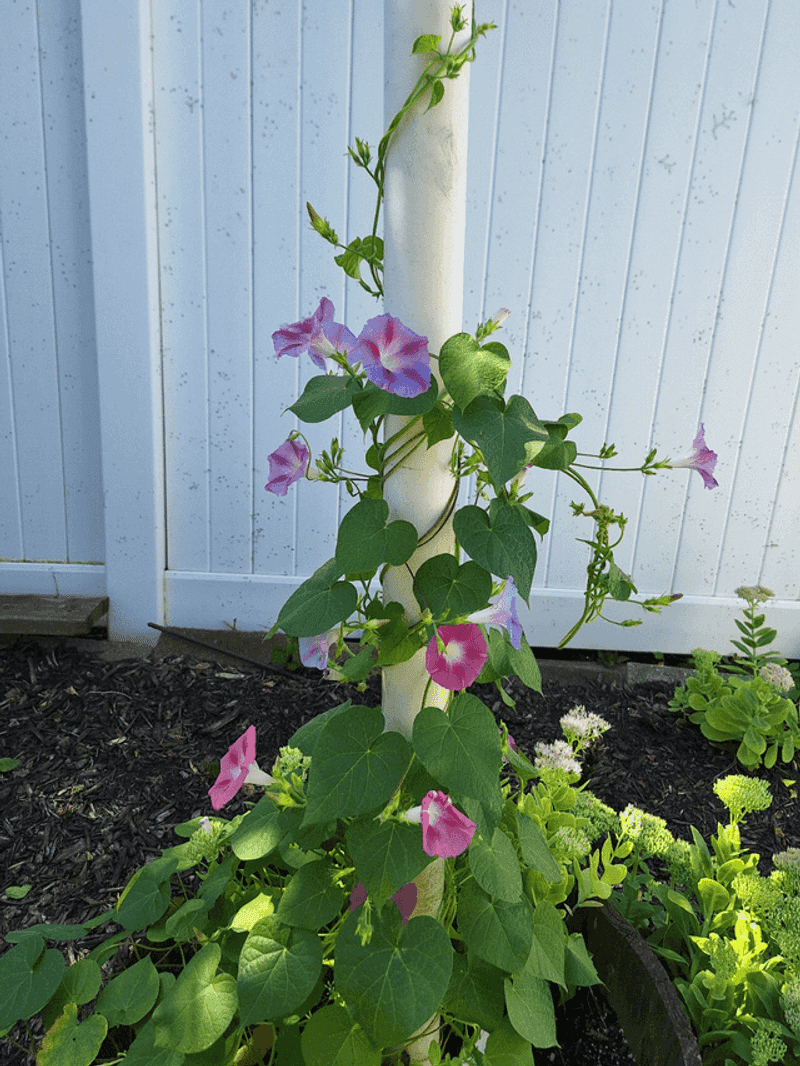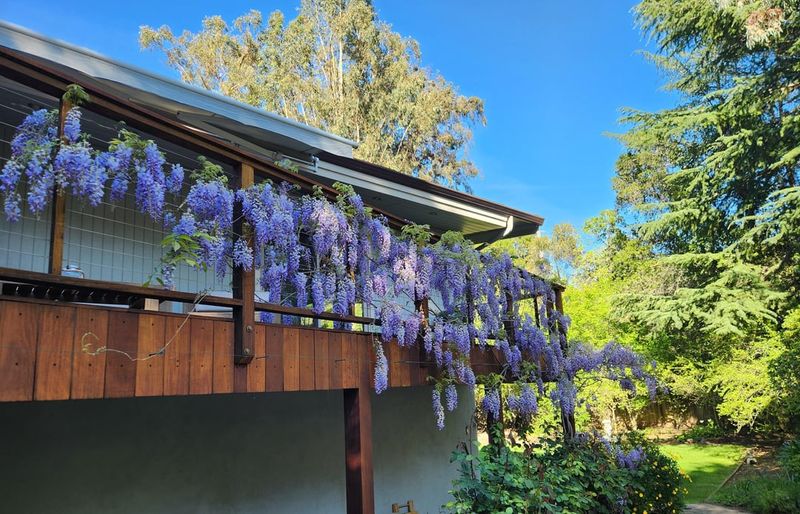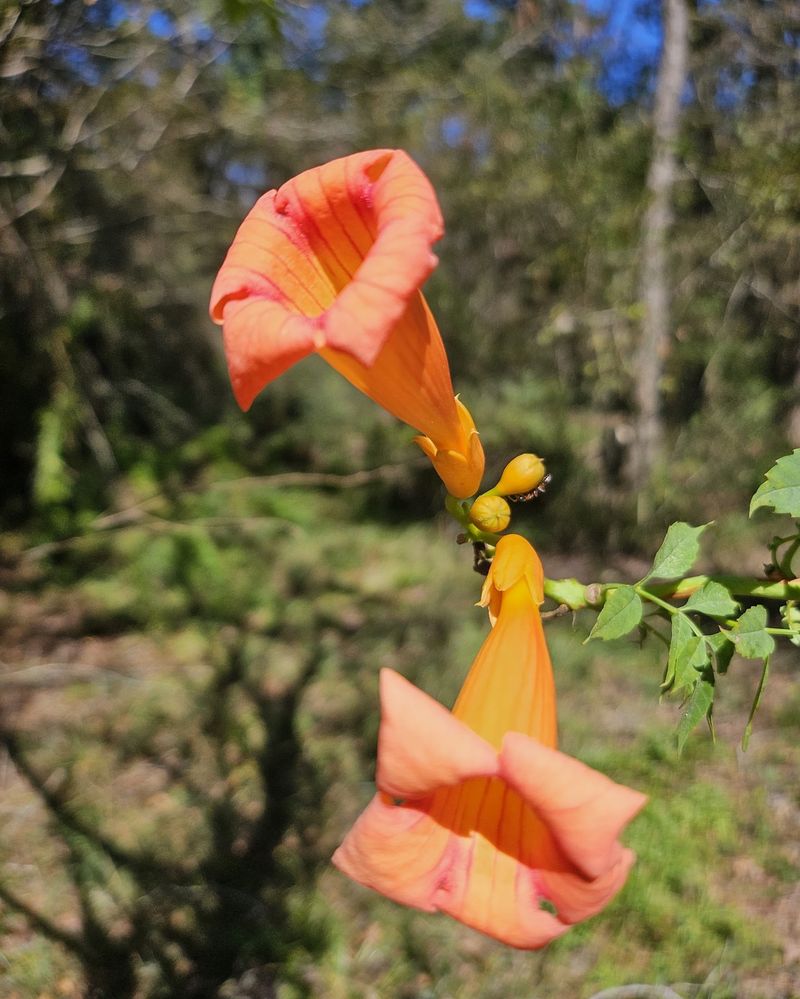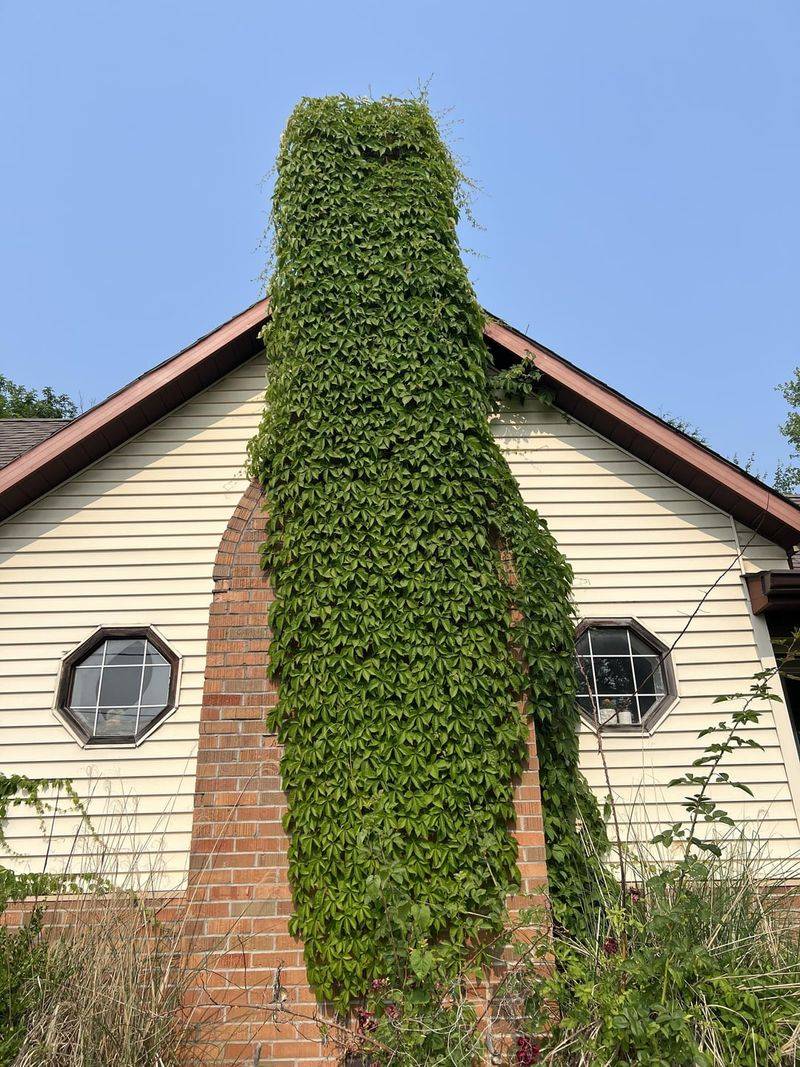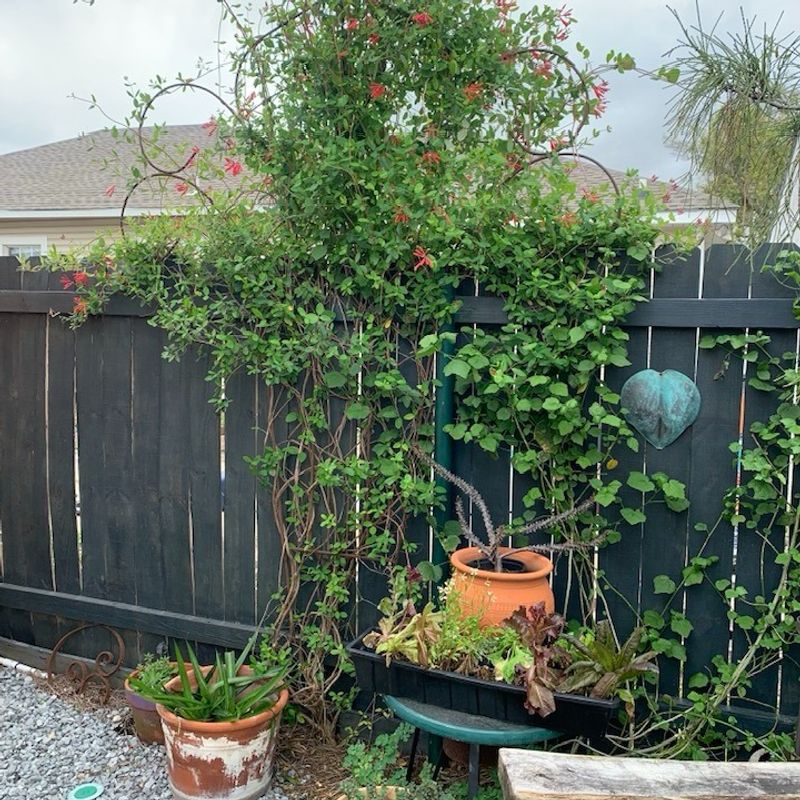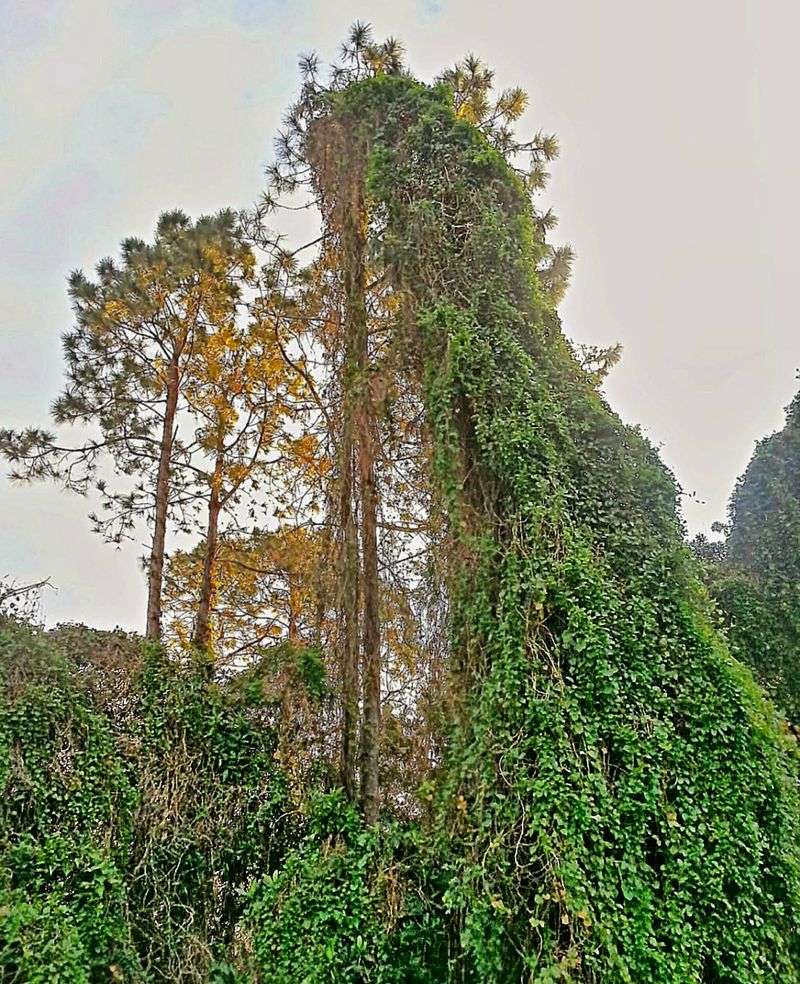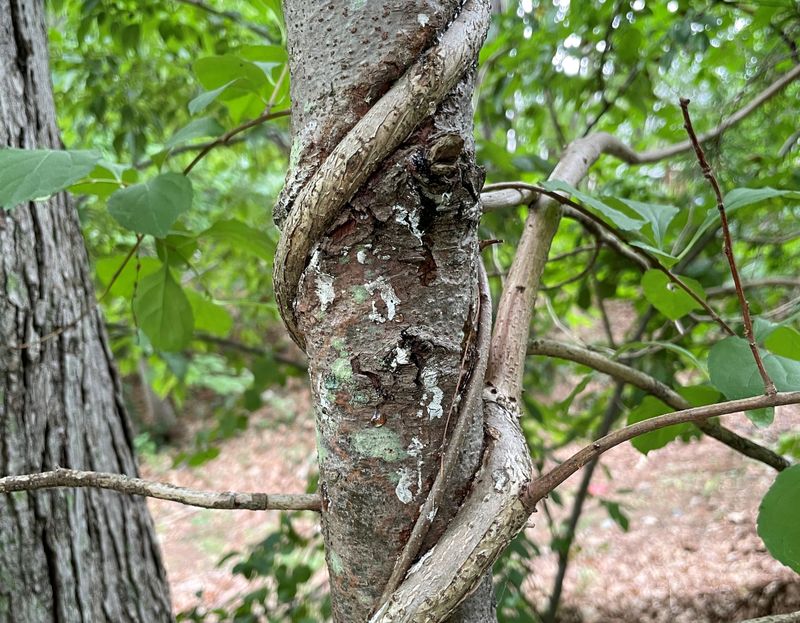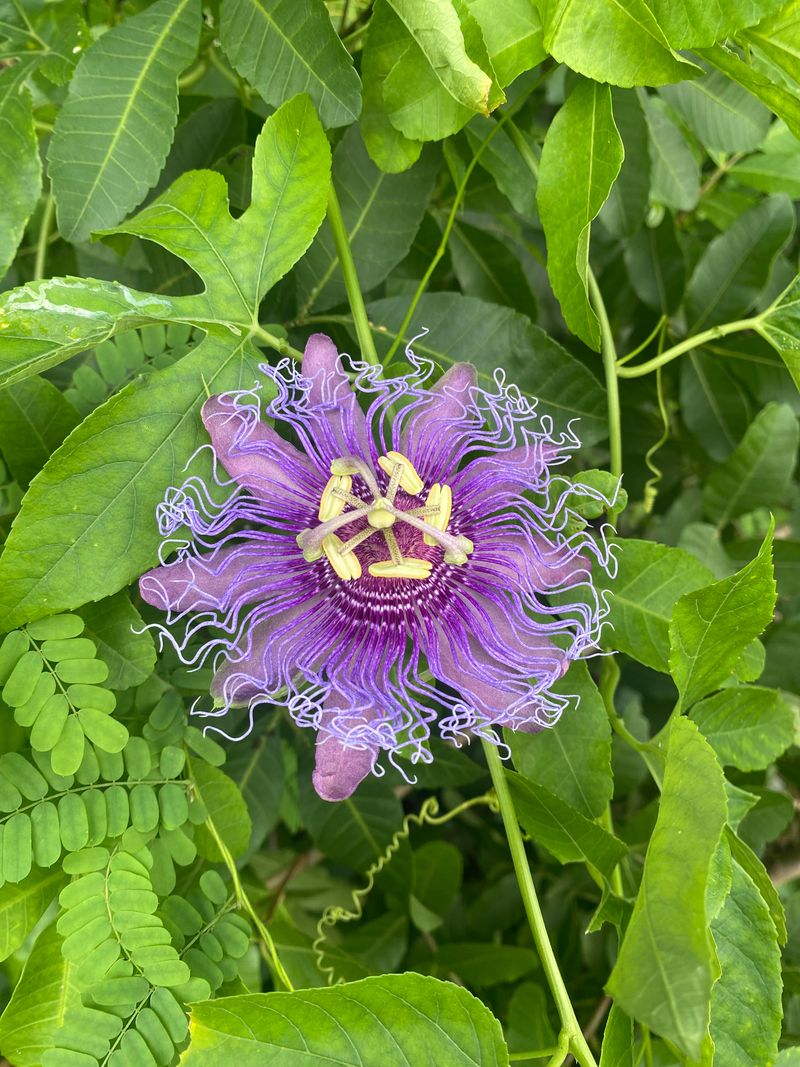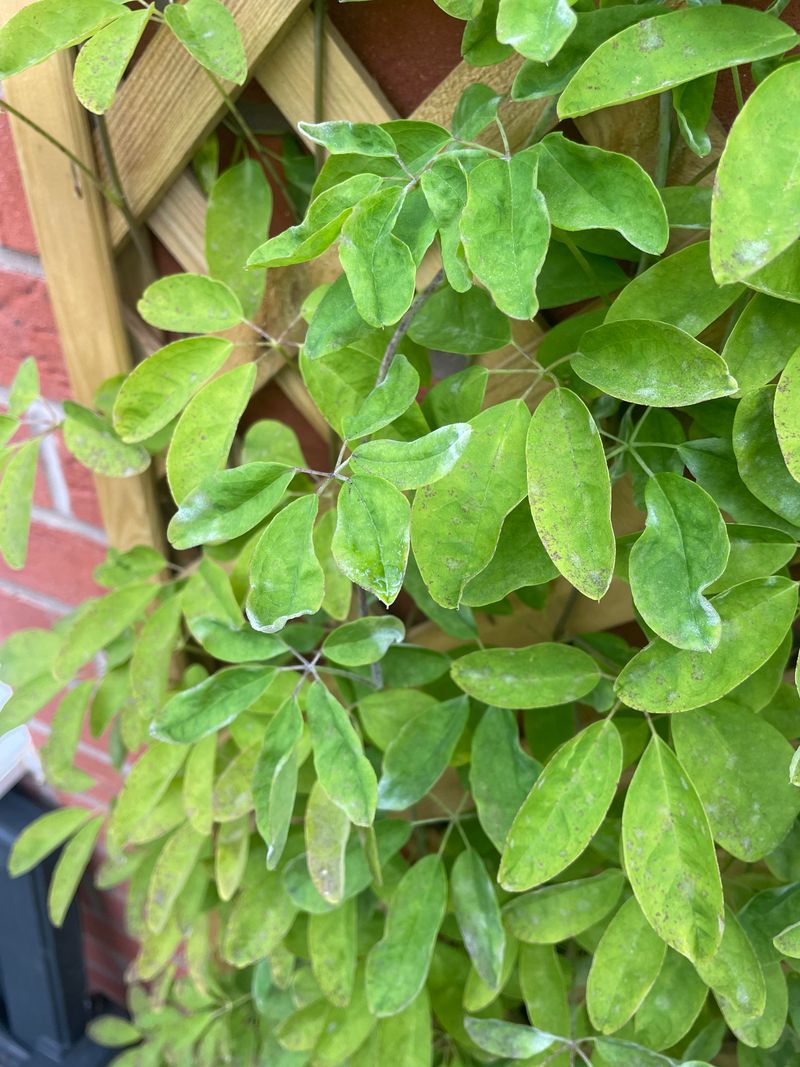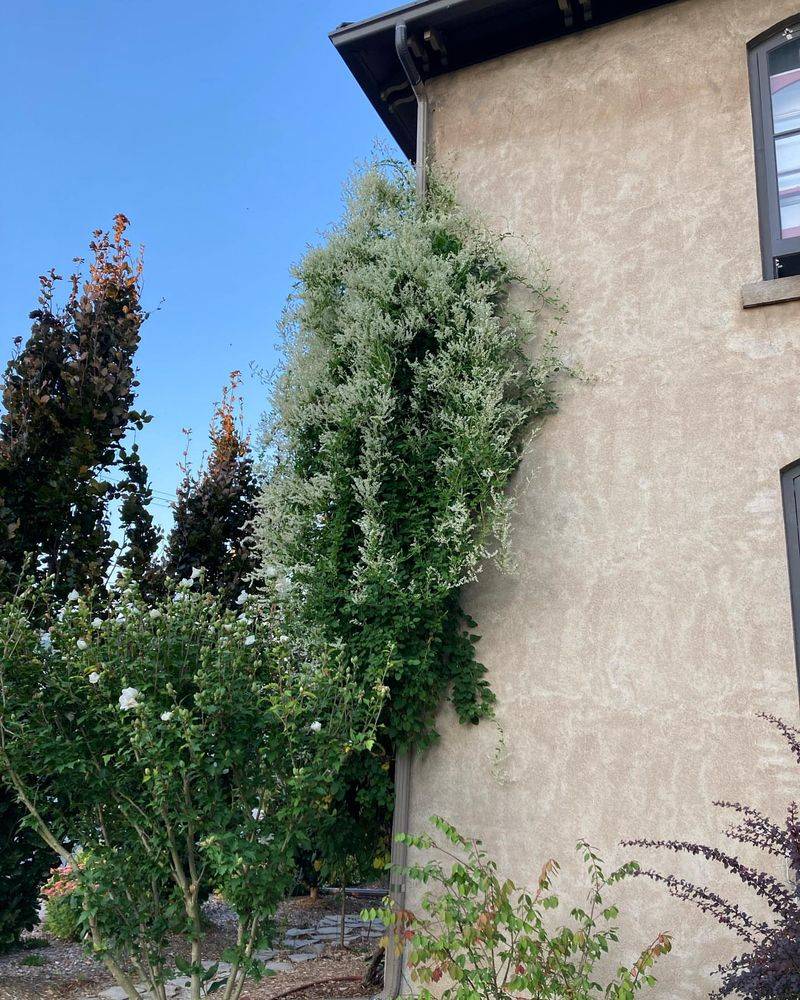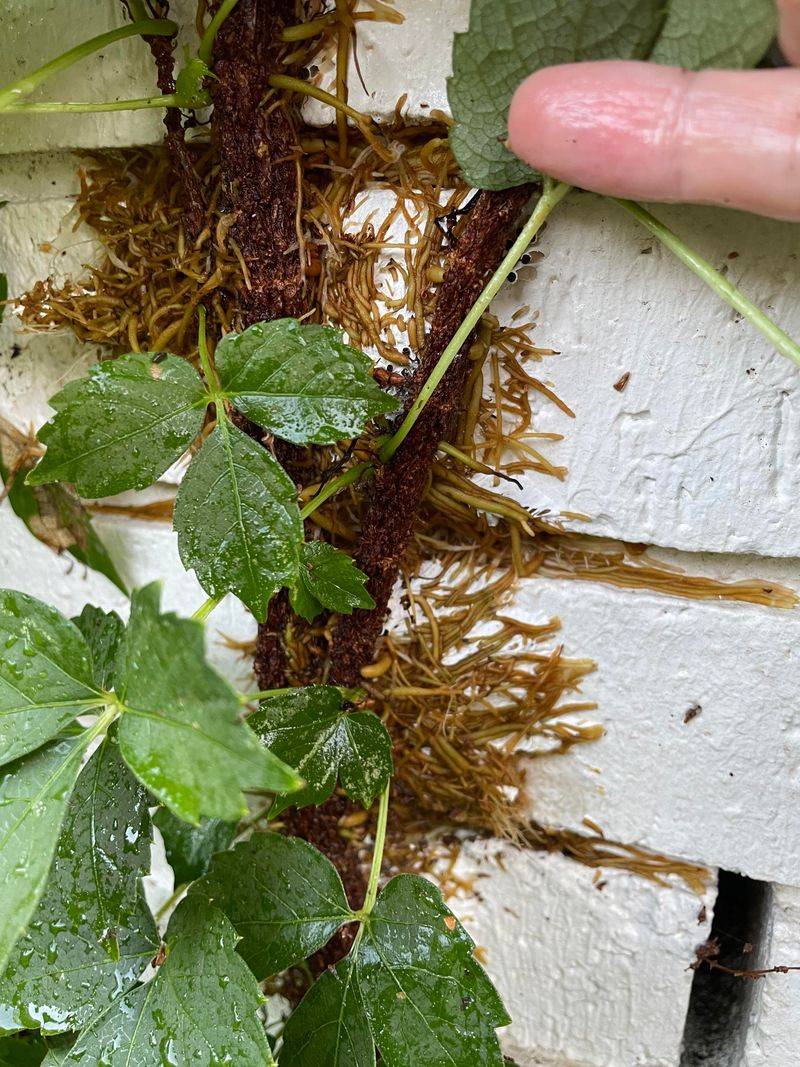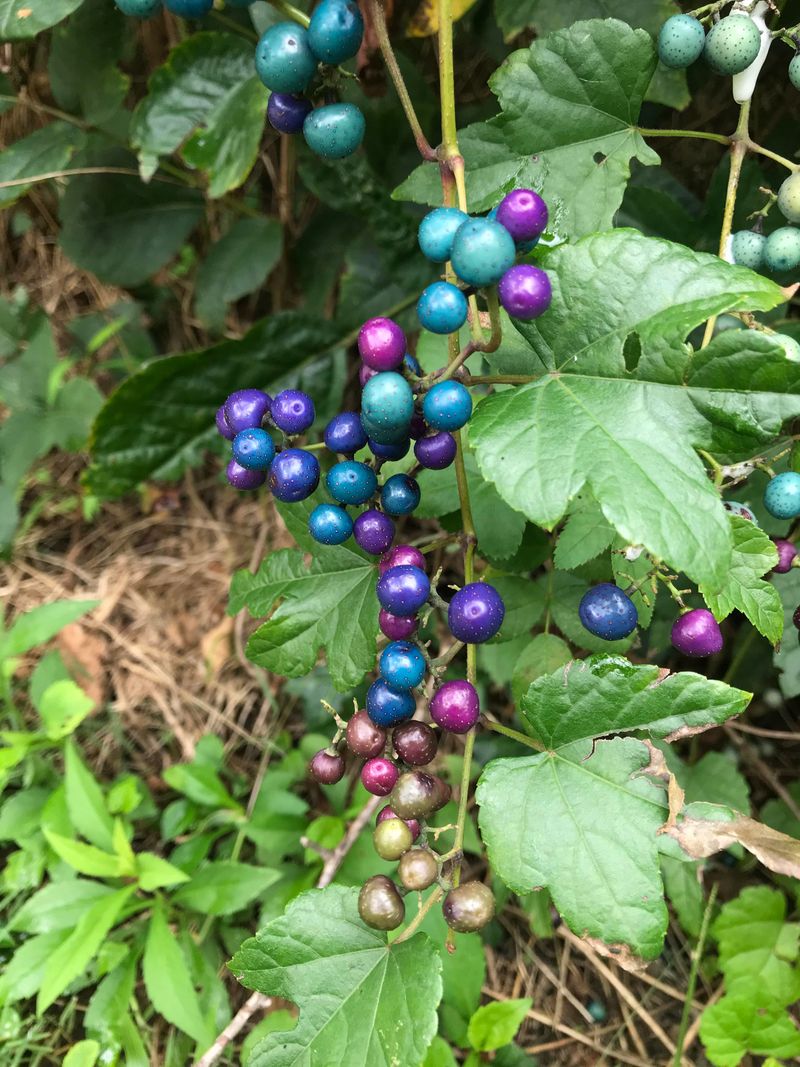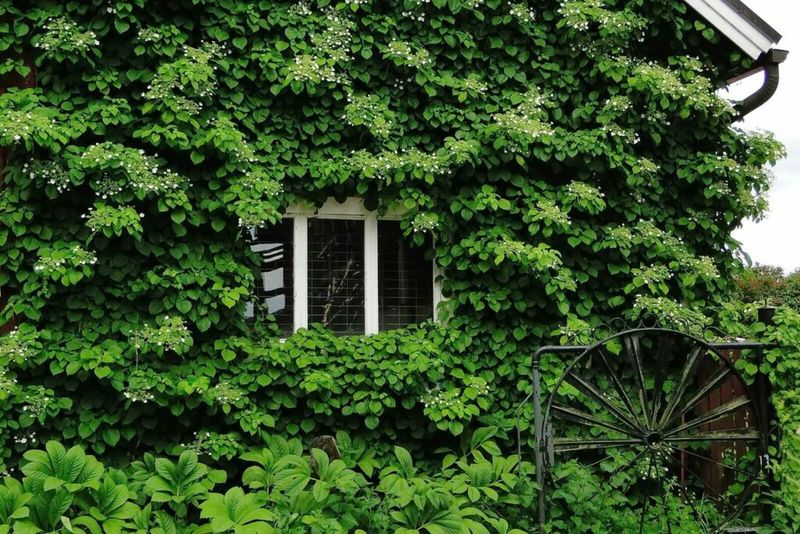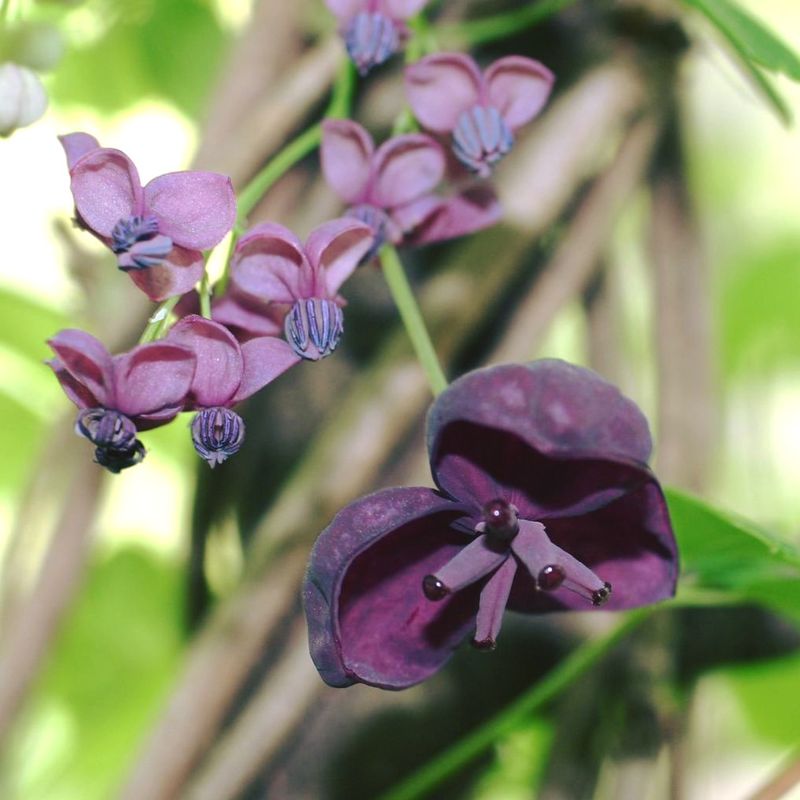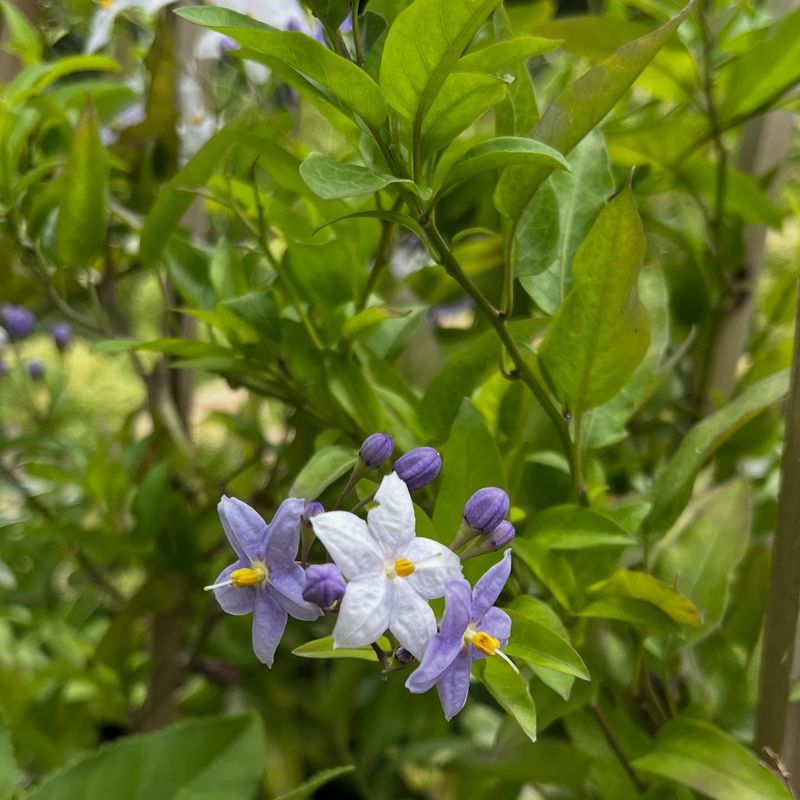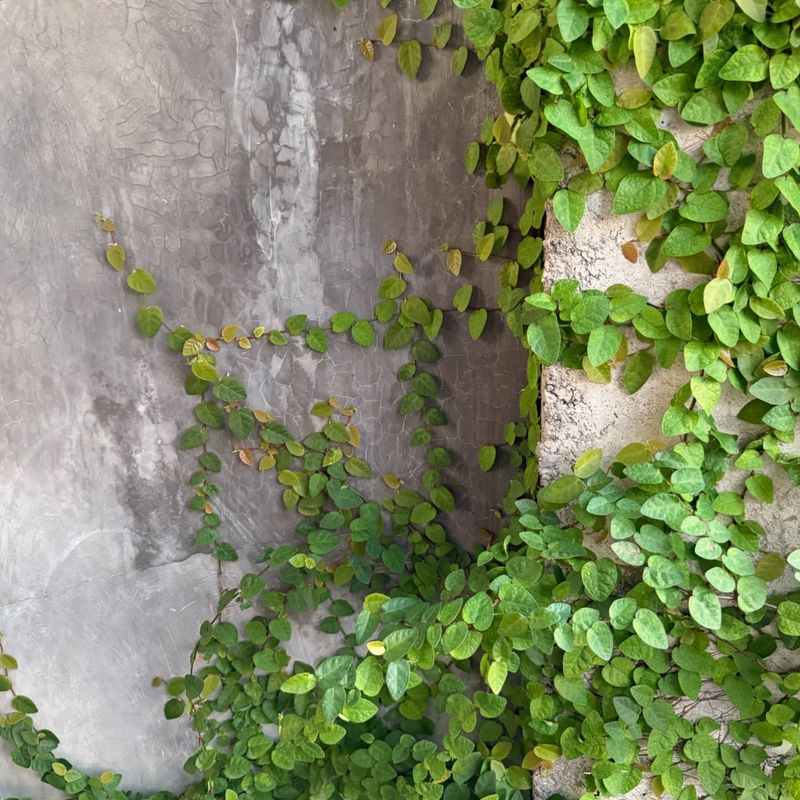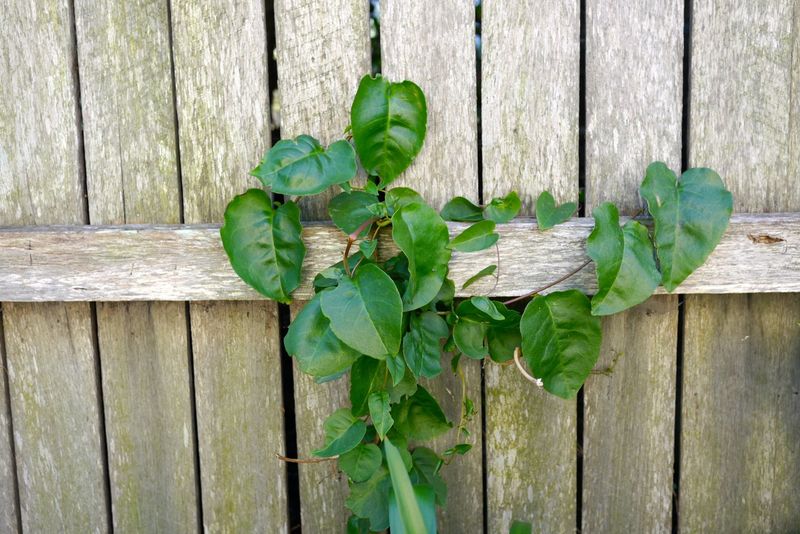After 15 years of tending gardens, I’ve encountered my fair share of plant disappointments. Some climbing plants that looked promising in catalogs turned into absolute nightmares in real life. My trellises, fences, and patience have all been tested by these aggressive growers.
The learning curve has been steep, with some vines taking over entire sections of my yard before I could get them under control. Others attracted so many pests that I spent more time battling bugs than enjoying blooms. A few even damaged structures with their surprisingly powerful growth habits.
Looking back at my gardening journey, these 18 climbers taught me valuable lessons—mostly about what not to plant. While they might work in some gardens, they’ve earned permanent spots on my personal blacklist for various compelling reasons.
1. English Ivy (Hedera helix)
My biggest garden regret started innocently enough on a back fence. Within two seasons, it had climbed up trees, under siding, and into gutters with unstoppable determination.
Removing it required multiple weekends of backbreaking labor as the stubborn roots clung to everything. Even years later, I still find new sprouts emerging from overlooked fragments. The damage to my home’s exterior cost hundreds to repair.
2. Morning Glory (Ipomoea purpurea)
Those charming trumpet-shaped flowers hide a sinister secret—they self-seed everywhere. What started as a decorative addition to my mailbox post became an annual battle against thousands of seedlings.
The vines grow several inches daily during summer, choking out nearby plants without mercy. I’ve pulled morning glory seedlings from flower beds 50 feet away from the original planting. Their persistent nature makes them nearly impossible to fully eliminate.
3. Wisteria (Chinese varieties)
The romantic cascades of purple flowers seduced me into planting this monster along my pergola. Nobody warned me about its Hulk-like strength that eventually cracked and twisted the wooden beams.
Maintenance became a weekly chore just to keep windows and doors from being engulfed. The aggressive root system sent up shoots 20 feet from the main plant, popping up through lawn and concrete alike. Even professional removal left underground remnants that continue to haunt me.
4. Trumpet Vine (Campsis radicans)
Hummingbirds adore it, but my relationship with trumpet vine quickly soured. The plant grew so vigorously that weekly pruning became necessary just to keep it somewhat controlled.
Its aerial rootlets attached to and damaged my home’s siding, creating unsightly marks. The final straw came when I discovered its extensive underground network sending up new shoots in my vegetable garden 30 feet away. Seven years after removal, I’m still fighting emergent sprouts.
5. Virginia Creeper (Parthenocissus quinquefolia)
Fall color isn’t worth the trouble this aggressive native brings. Its adhesive pads damaged paint when removed from my home’s exterior, leaving ghostly imprints that required repainting.
Birds spread the berries everywhere, creating new plants in gutters and garden beds. My skin developed an itchy rash after pruning sessions, despite wearing protective clothing. The massive root system made complete removal nearly impossible without professional help.
6. Honeysuckle (Japanese varieties)
The fragrance initially won me over, but this invasive nightmare quickly took control of an entire fence line. Birds spread seeds everywhere, creating new plants in the most inconvenient locations throughout my property.
The dense growth choked out native plants and created perfect hiding spots for rodents near my home. When I finally decided to remove it, the intertwined stems had completely engulfed my fence, requiring replacement of several sections. Never again.
7. Kudzu (Pueraria montana)
A gardening acquaintance gifted me this infamous vine, claiming it was “contained” in a pot. That containment lasted exactly one season before it escaped and began its reign of terror.
Growing up to a foot per day in summer, it smothered small trees and shrubs with shocking speed. The massive tuberous roots defied my removal attempts, growing back stronger each time. I eventually needed professional help with herbicides to finally defeat this green monster.
8. Bittersweet (Oriental varieties)
Those charming orange berries convinced me to plant this climber near my garden shed. By the following year, it had wrapped around and begun strangling nearby young trees.
The berries, while decorative, were spread everywhere by birds, creating new plants throughout my property. Underground runners emerged dozens of feet from the original planting. Complete eradication required three years of vigilant cutting, digging, and spot-treating persistent regrowth.
9. Passion Flower (Passiflora caerulea)
The exotic blooms captivated me until this aggressive vine decided my entire garden belonged to it. In just one growing season, it sent underground runners 15 feet in all directions, emerging in my vegetable beds and lawn.
Removing the main plant proved futile as the runners continued producing new growth. Butterfly enthusiasts may love it, but my garden couldn’t contain its territorial ambitions. Even after “removal,” I spent three more years eliminating surprise shoots throughout my yard.
10. Chocolate Vine (Akebia quinata)
The unusual purple flowers and interesting foliage seemed perfect for my arbor. Nobody mentioned its ability to layer and root wherever stems touch the ground, creating an expanding network of plants.
Birds spread the seeds widely, establishing new colonies in wild areas of my property. The twining stems grew so densely they created impenetrable masses that harbored rodents. Complete removal required cutting everything back, digging out roots, and vigilant monitoring for years afterward.
11. Silver Lace Vine (Polygonum aubertii)
Advertised as “fast-growing,” this understatement became clear when it covered a 30-foot fence in a single season. The fragrant white flowers attracted so many wasps that sitting on my patio became uncomfortable.
Pruning stimulated even more aggressive growth, creating a maintenance nightmare. When I finally removed it, the extensive root system had damaged underground irrigation pipes. Despite thorough removal efforts, new shoots continued appearing for years afterward.
12. Boston Ivy (Parthenocissus tricuspidata)
My brick home seemed perfect for this classic climber until I discovered the damage it caused. The adhesive pads left permanent marks when removed, and the vigorous growth required constant maintenance to keep windows clear.
Birds spread seeds everywhere, creating unwanted plants in gutters and garden beds. The dense foliage became home to spiders and wasps right outside my windows. Removal damaged my mortar joints, requiring expensive repairs by a professional mason.
13. Porcelain Berry (Ampelopsis brevipedunculata)
Those eye-catching multicolored berries looked beautiful in garden magazines. In reality, they created a nightmare as birds spread them throughout my property, establishing new vines in the most inconvenient locations.
The aggressive growth habit allowed it to climb and smother small trees within a single season. Root systems proved extensive and difficult to fully remove. Despite multiple eradication attempts, new seedlings continued emerging for years, requiring constant vigilance.
14. Climbing Hydrangea (Hydrangea petiolaris)
The glacial growth rate had me wondering if it was even alive for the first three years. Then suddenly, it exploded with growth, attaching firmly to my home’s exterior with aerial rootlets that damaged the surface when removed.
The mature weight became so substantial it pulled down gutters during a heavy rainstorm. While undeniably beautiful when blooming, the structural damage and difficulty of removal made me regret this slow-starting but eventually problematic climber.
15. Mile-A-Minute Vine (Persicaria perfoliata)
The name should have been warning enough about this annual nightmare that appeared unexpectedly in my garden. Within weeks, it had scrambled over everything in its path, forming impenetrable mats of thorny stems.
Removing it bare-handed resulted in numerous painful scratches from the tiny barbs. Birds eagerly spread the seeds, creating new problem areas throughout my property. Complete eradication required carefully timed removal before seed production for several consecutive years.
16. Potato Vine (Solanum jasminoides)
Marketed as well-behaved, this deceptive climber revealed its true nature after establishment. The delicate star-shaped flowers were pretty, but the rampant growth quickly engulfed neighboring plants and structures.
In my climate, it grew year-round with barely any dormancy period, requiring constant pruning. The dense foliage became a haven for whiteflies that then infested my entire garden. Removing the established woody stems required power tools and left an unsightly tangle of roots.
17. Climbing Fig (Ficus pumila)
This seemingly innocent vine permanently damaged my home’s exterior. The tiny aerial rootlets secreted a substance that bonded to my stucco, making removal impossible without taking chunks of the wall with it.
When mature, the foliage changed dramatically from the juvenile form, becoming bushy and pulling away from surfaces with its increased weight. The resulting gaps became perfect entry points for pests into my home. Complete removal required professional help and exterior repairs.
18. Madeira Vine (Anredera cordifolia)
The heart-shaped leaves and fragrant flowers seemed charming until I discovered its secret weapon: aerial tubers that drop and start new plants wherever they land. One vine quickly became dozens spreading throughout my garden.
The weight of mature growth collapsed my trellis during a rainstorm. Underground tubers proved nearly impossible to completely remove, with fragments as small as a pea growing into new plants. Years later, I still find occasional sprouts appearing after heavy rains.

